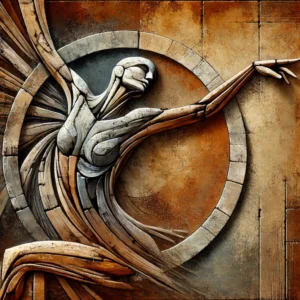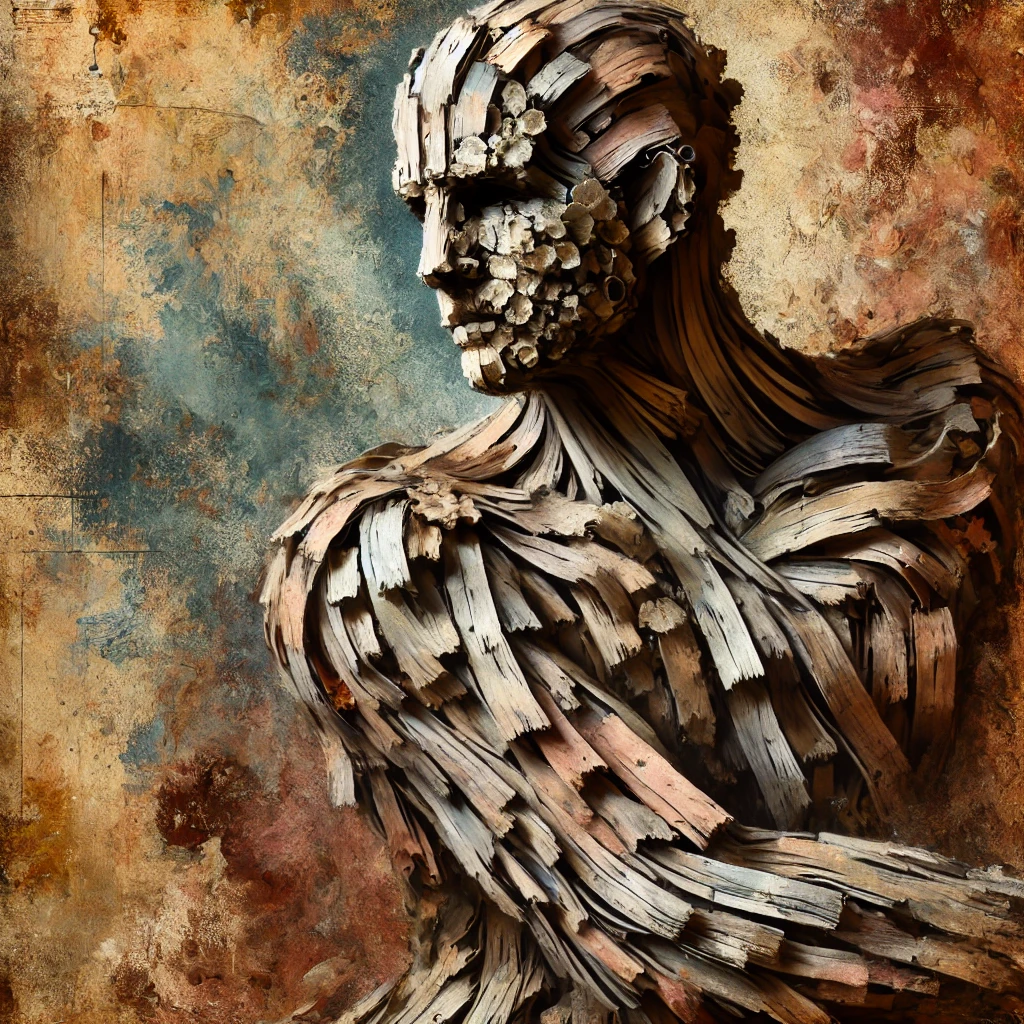Art has always been associated with beauty. From ancient sculptures to Renaissance paintings, beauty has been a central element. But can art exist beyond aesthetics? Khalil Chishtee, a Pakistani-American artist, challenges the notion that art must be visually pleasing. His work, particularly his sculptures made from plastic bags, questions traditional concepts of beauty and value in art. In this exploration of his artistic journey, we will delve into his background, philosophy, and the deeper meanings behind his unconventional works. The message behind “https://multigrafico.com/khalil-chishtee-no-todo-el-arte-es-belleza/” reveals that not all art needs to be beautiful to be meaningful.
Khalil Chishtee: The Artist Beyond Aesthetics

Khalil Chishtee’s work has captivated audiences by forcing them to rethink the role of beauty in art. Born in Pakistan, Chishtee moved to the United States, where his experiences as an immigrant significantly influenced his artistic expression. His art is not just about creating something pleasing to the eye but about confronting emotional, social, and environmental issues through raw, honest creations.
Early Life and Inspiration
Khalil Chishtee’s early life in Pakistan played a crucial role in shaping his artistic vision. Raised in a culture deeply rooted in history, tradition, and artistic heritage, Chishtee developed an early love for storytelling and creativity. His exposure to a rich tapestry of art, from traditional South Asian crafts to modern influences, shaped his artistic perspective.
As an immigrant, Chishtee was confronted with feelings of displacement, identity struggles, and the complexities of belonging. These personal experiences began to bleed into his work, leading him to challenge the traditional concept of beauty and explore the emotional struggles that come with migration. This theme resonates strongly in “https://multigrafico.com/khalil-chishtee-no-todo-el-arte-es-belleza/.”
The Use of Plastic Bags: Symbolism and Philosophy
One of the most distinctive aspects of Chishtee’s work is his use of plastic bags. These are not merely materials of convenience but symbols loaded with meaning. Plastic bags, often regarded as disposable, reflect how society treats both the environment and emotions. In “https://multigrafico.com/khalil-chishtee-no-todo-el-arte-es-belleza/,” the artist uses these discarded materials to express how modern life often leaves emotional and environmental waste in its wake.
Plastic, in Chishtee’s hands, becomes a metaphor for fragility and disposability. His sculptures, twisted and contorted, evoke the vulnerability of the human condition. The choice of plastic bags underscores his belief that just as society discards waste, it also discards emotions, people, and even the planet.
Exploring Emotional Depth in His Sculptures
Chishtee’s sculptures evoke powerful emotions, making his art resonate on a deeply human level. The figures he creates are often trapped in plastic, suffocating under the weight of their own emotional burdens. These figures aren’t perfect; they are messy and broken, representing the raw, often unspoken, emotions that humans experience.
For example, many of his sculptures explore themes of isolation and despair. These emotions are not depicted through traditional beauty but through the very imperfections of the material he uses. His work reflects the complexity of human emotions, making it clear that art can convey deep feelings even without conforming to conventional aesthetics.
This emotional depth is a key element in his philosophy, as discussed in “https://multigrafico.com/khalil-chishtee-no-todo-el-arte-es-belleza/.”
The Environmental Critique in His Work
Environmental awareness is another key element in Chishtee’s art. By using plastic bags—a symbol of overconsumption and environmental neglect—he critiques modern society’s tendency to overlook the environmental consequences of its actions. His sculptures serve as a poignant reminder of the damage we inflict on the planet.
In “https://multigrafico.com/khalil-chishtee-no-todo-el-arte-es-belleza/,” Chishtee’s work becomes not only a statement about human emotions but also an environmental call to action. His art asks us to reconsider our relationship with the planet and our tendency to view resources, people, and even feelings as disposable.
Cultural Influence and Migration
Migration and cultural identity play significant roles in Khalil Chishtee’s work. As a Pakistani-American, Chishtee’s art is shaped by his experiences of navigating multiple cultures. This duality—existing between two worlds—is reflected in the themes of displacement, belonging, and identity that pervade his sculptures.
His figures, often made of fragile and disposable materials like plastic, mirror the feeling of impermanence that immigrants often experience. They are metaphors for the immigrant experience—constantly moving, trying to find a place in a world that doesn’t always offer easy acceptance.
In “https://multigrafico.com/khalil-chishtee-no-todo-el-arte-es-belleza/,” this sense of migration and identity comes to life through his use of materials that are both global and transient, much like the immigrant experience itself.
Critical Reception and Influence on Contemporary Art
Khalil Chishtee’s work has made waves in the contemporary art world. Critics have praised him for pushing the boundaries of what constitutes art and for using materials that challenge traditional ideas of value and beauty. His work is often described as provocative, forcing viewers to confront their own assumptions about art and its role in society.
His use of discarded materials, particularly plastic bags, has been groundbreaking in terms of environmental art. Chishtee’s ability to turn what many consider waste into something deeply meaningful has inspired a new wave of artists to explore environmental themes in their work. This critical reception and influence are discussed in “https://multigrafico.com/khalil-chishtee-no-todo-el-arte-es-belleza/.”
Impact of His Work on the Art Market
Chishtee’s work, while emotionally and environmentally charged, also has a significant impact on the art market. His unique use of materials and the emotional depth of his pieces have attracted collectors who value innovation and bold artistic expression. As the conversation around sustainability and environmental awareness grows, Chishtee’s work continues to rise in prominence.
The art market has responded positively to his sculptures, with galleries around the world showcasing his work. His influence extends beyond just the environmental message—Chishtee has shown that art doesn’t have to be beautiful to be valuable.
Conclusion: Redefining Art Beyond Beauty
In the end, Khalil Chishtee’s art challenges us to redefine our understanding of beauty and value in art. His work, particularly his use of plastic bags, pushes the boundaries of what is traditionally considered art. His message, as highlighted in “https://multigrafico.com/khalil-chishtee-no-todo-el-arte-es-belleza/,” is clear: art doesn’t need to be beautiful to be meaningful.
Chishtee’s sculptures remind us that art can be a reflection of the messiness of human emotions, the fragility of life, and the environmental consequences of modern society. His work is a powerful testament to the idea that true art isn’t just about visual appeal—it’s about emotional resonance, societal critique, and challenging conventions.
By embracing imperfection, Khalil Chishtee has created a body of work that speaks to the heart and soul of the human experience, proving that beauty is not the only standard by which art should be measured.
